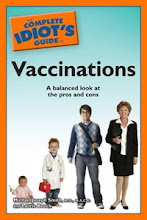Wednesday, April 30, 2008
Gender and Cancer Vaccines
One important difference between all these vaccines is that Gardasil is given before any cancer diagnosis, and the other vaccines under trial that I mentioned are given after a cancer diagnosis in addition to standard cancer treatment. These post-diagnosis vaccines seem to be the trend with cancer vaccines, despite the heavy marketing of Gardasil. These vaccines are designed to "retrain" the patient's immune system to respond more effectively to proteins associated with cancer cells. Some of these vaccines are developed using the patient's own cells, and other are not.
Two promising post-diagnosis vaccines under investigation that are not gender-specific target lung cancer (the most deadly cancer among both men and women) and cutaneous melanoma (which is more deadly among men than among women).
I'm curious about the gender differences between cancer vaccines. Do women respond more favorably than men to cancer vaccines, or vice versa? Are vaccines that use the patient's own cells more or less effective than those that don't? Are vaccines for gender-specific cancers, such as prostate and cervical cancer, more or less effective than vaccines for cancers that can strike both genders? There might be no patterns here, but if there are, it would be interesting to see how physiology, sociology, and other factors impact the effectiveness of these vaccines.
Wednesday, April 16, 2008
BPA and Baby Bottles
Although BPA is also sometimes found in tableware, medical devices, dental sealants, and automobiles, among other places, the draft brief stated that humans primarily absorb BPA though food and drink. The
The draft brief points out that most ingested BPA is metabolized and eliminated in the urine. The remaining ("free") BPA in the body is probably harmful. Based on evidence from animal studies, infants and young children are thought to be less efficient at metabolizing and excreting BPA than adults, the draft brief states, so they retain higher levels of free BPA in their bodies. The draft brief also says that BPA seems to leach more easily from plastic into foods when the food is heated. As such, baby bottles (often heated up, of course, before given to the baby) seem like an especially potent source of exposure in infants.
Formula-fed infants aged 0 to 6 months, who are exposed to BPA primarily though baby bottles but also through the packaging of formula containers, might absorb about ten times the amount of BPA as a breast-fed infant, according to the draft brief.



